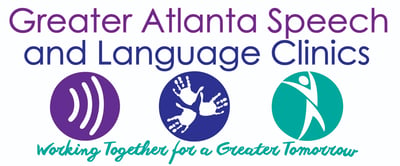

Gestalt Language
What is it???
Gestalt Language Processors learn language in chunks (phrases, sentences, passages, etc.) instead of learning each word as an individual unit. This may be through immediate echolalia or delayed echolalia (scripting).
How do I know if my child is learning language in gestalts?
Some signs: they may seem to babble strings of words with intonation (these may be memorized passages of songs, movies, or things previously heard) that adults may or may not understand; a child may have one phrase they use for a variety of purposes; they may sing songs with correct intonation but incorrect words. Examples: “jumping on the bed” (from 5 Little Monkeys), ”surprise!” (from Surprise Eggs YouTube Video), “oh no!”.
GLP: What might speech therapy look like?
Asking Fewer Questions – there are a couple of challenges with asking too many questions.
Following the Child’s Lead – instead of coming in with a lesson plan, an SLP may follow the child’s lead for most of the session. This may mean playing with 1-2 toys the child prefers rather than playing with many toys – and that is okay (in fact, that’s great). When we follow a child’s lead, we have their interest and attention, which are important foundations for building language.
Acknowledging and repeating scripts/gestalts – when a child uses a gestalt, the SLP will acknowledge the gestalt by repeating it, nodding their head, saying “mmm-hmm” or “yep.” SLPs will acknowledge the gestalt after a child says it to communicate yes, I hear what you are saying, and I know it is important – even if the SLP doesn’t know exactly what it means.
Taking (lots of) language samples – in order to create goals and monitor progress, the SLP will likely take lots of language samples. This means writing down what your child says so they can work on combining gestalts or introducing new gestalts.
Rephrasing gestalts for the child’s meaning – once an adult understands the meaning of the gestalt (or thinks they do), they can attempt to mitigate (or change it) so that others can understand its intended meaning. For example, if a child says, “there’s a lot of traffic” the SLP will acknowledge the gestalt and may hypothesize it means “I’m stuck” or “I need help.” The SLP might say ”I’m stuck” to model a new gestalt that pairs with the intended meaning.
Teaching more gestalts – especially at the early stages, an SLP may teach more gestalts (rather than more one-word utterances) at the phrase or sentence level (Examples: ”let’s ___,” “we can _____” ).
Mixing and matching gestalts (mitigating gestalts) – this is done to break up gestalts to teach children new phrases and sentences.
More quiet moments – there may be more quiet moments in sessions for the SLP to wait for the child to initiate communication and see what gestalts they are learning.
Everything spoken is not taken literally, but looked at for intended meaning (we don’t always understand the child’s intended meaning with the script) – The gestalt is acknowledged with a head nod, smile, yes, repeat it, and then the meaning behind the gestalt is modeled (this is determined through observation and time).
Contact Us


Main Clinic Building
1515 Johnson Ferry Road
Suite 100
Marietta, GA 30062
OT / PT Annex
1503 Johnson Ferry Road
Terrace Level
Marietta, GA 30062
Appointment Request: Click Here
Phone: (770) 977-9457
Fax: (770) 977-5087
Email: greateratlantaspeech@gmail.com
